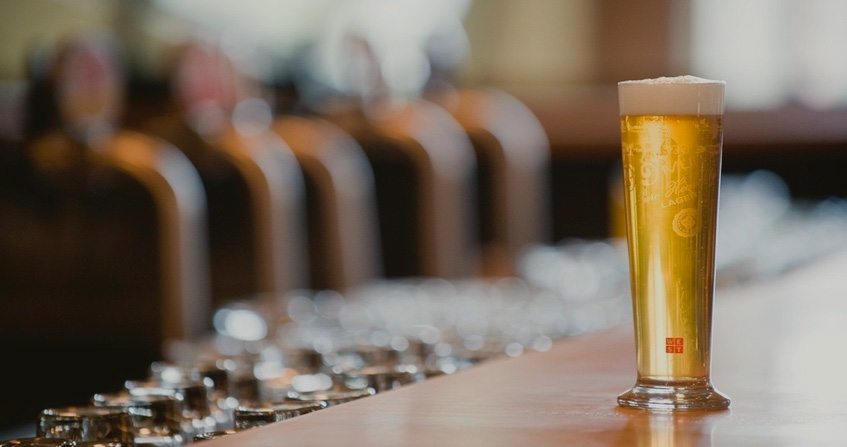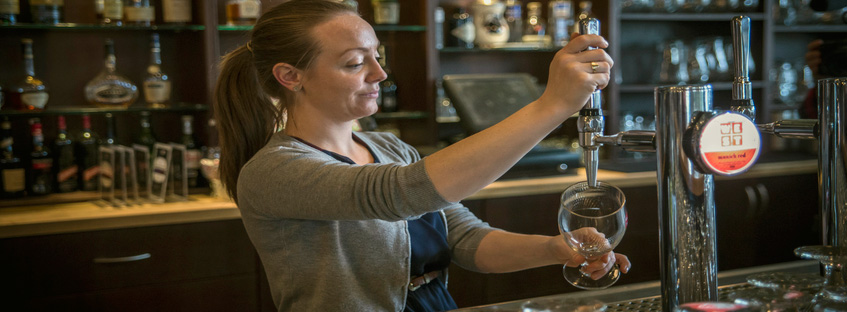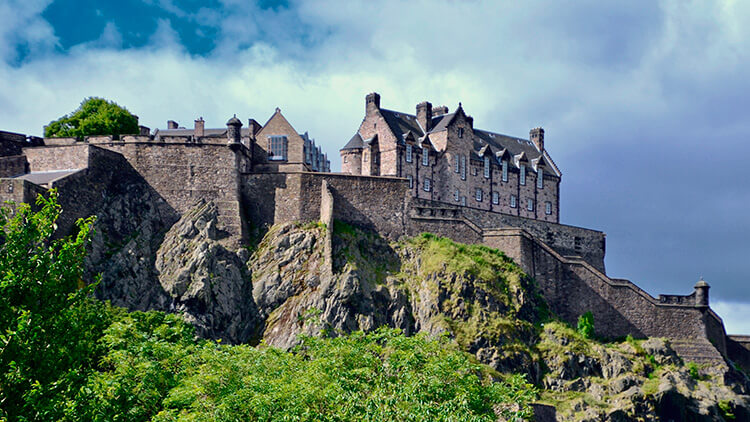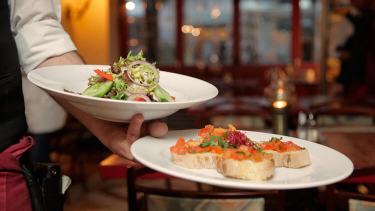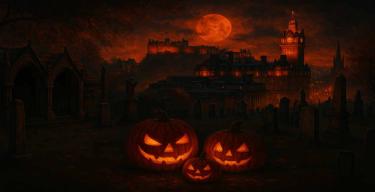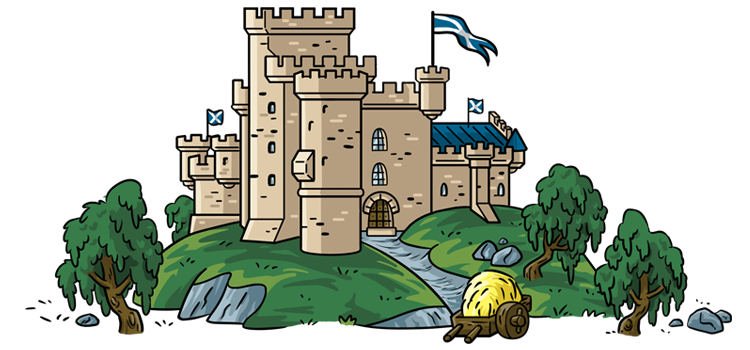Scotland is widely known for whiskey, so much so that many visitors flock to the country just to experience its unique Single Malt. However, beer has one of the world’s best examples here. Thousands of years of tradition have resulted in exclusive brands of exquisite refinement. Let’s not forget that Whiskey and beer share a large part of the production process and its ingredients: barley that grows in the fertile and extensive cereal fields and crystal clear water in its transit through the peatlands that grow in the Highlands. The advertised German and Belgian brands have a lot to envy Scottish beers.
In the following lines we will talk about how to order a simple pint in any of the pubs in Edinburgh’s Old Town, going through distinguishing the main types of beer to knowing the most relevant brands.
A tradition of five millennia
Scotland is a country of Celtic tradition and, as in all of this type, beer has been and is very present in daily life, as opposed to wine in Mediterranean countries.
It is necessary to go back about 5000 years to find the first references in the Caledonian country of production of this drink. Greeks, like Pitheas, were already talking about a strong drink made by the Picts. This primordial drink was seasoned with wild herbs, to give it a peculiar flavor. There have been many studies to recover this ancient recipe that went as far as the 19th century, to disappear and be forgotten. Currently, there are breweries that have started to produce this drink in an artisanal way. “Fraoch Ale” is the best example, from William Bros, that takes you 4000 years back in history.
During the Middle Ages, the production process began to professionalize passing into the hands of the monks.
As of the unification in the Act of Union of 1707, the situation changes abruptly and the golden age of beer production in Scotland kicks off, largely thanks to the tax on beer and malt specifically. They were lower on the Scottish side. Thus, in the 19th century Edinburgh, and specifically the Canongate neighborhood, was the place of production of the famous “Edinburgh Pale Ale”, exported to all the British colonies. Of the 280 breweries across the country, about 40 were based in its capital.
From that time came the classification of 70, 80 and 90 shillings: a price system that was based on the degree of alcohol. The method used was to weigh the famous Hogshead keg (254 liters) to determine the price, how much more the keg weighed, less alcohol and cheaper beer. It is still used today.
Despite the setback of the two World Wars for this industry, currently, the Scottish beer sector remains important at European level.
How to order a beer in Scotland
Consecrated brewers are used to arriving at a bar and ordering a beer or bottle of the two / three types of beers available, an easy decision.
Now, when entering a Scottish pub, things get complicated. Not only are dozens of bottled brands, but dozens of taps that appear above the bar, to which we add the endless list of types of beer according to their qualities. Do not get nervous if when you get to the bar of any pub doubts assail you; Here is a short guide to ordering a beer in Scotland, without fear of being wrong.
It is very important to take into account the wide variety that exists to understand that when ordering a beer saying: “Can I have a beer”, the normal answer is “of what type?” Or “how do you like it?” We must remember that Beer / bɪr /, is the Anglo-Saxon general word for beer, and beer, like wine, has its own nomenclature.
By the type of container
- Draft / drɑːft /, draft beer
Bottle / ˈbɒtl /, in a generally pint bottle
Can / kæn /, canned 33cl or pint 568ml
For the curious, the traditional pint glass and its peculiar shape have an explanation. The bulge at the top, improves the grip on the one hand, but also makes it easier for waiters. They do not fit into each other when stacked, as conicals do.
By size
- Pint / paɪnt /, or imperial pint, standard beer glass size of about 568ml.
- Half pint / hɑːf paɪnt / or 284ml..
Size is something the British and even the Scots take very seriously. It is not difficult to find a customer claiming his half inch of beer. All glasses are certified with the mark of a crown with the exact measurement of an Imperial Pint. If we still have doubts, in many Edinburgh pubs we can see not far from the bar a small tin jug. This jug bears an official seal marking the exact capacity measurement, with the certified seal.
For the taste
Bitter, sweet, blonde, black, red, toasted, carbonated, cold, at room temperature … We don’t all have the same tastes. In the world of beers, it can be said that there is a beer for each of us. Let’s see in the following classification what we can find in Scotland and specifically in its capital, Edinburgh.
Lager
Lager, or low-fermented, beers are by far the most widely consumed type of beer in the world. They are those that are served cold and stand out for their high carbonation although they are mainly light in color, we can also find them dark. Beers like St Mungo or Tennens are two of the Scottish examples.
Ale
It is a type of high fermentation beer, generally more complex to taste and aromatic, as well as a higher alcohol content. These are usually served at room temperature, not hot. Let’s not panic at the first sip! Within this typology there is a labyrinth of subcategories in which we are not going to introduce ourselves. For simplicity, they are subdivided into two categories and the Scottish Ales, “Scotch Ales” form their own subcategory. Within the Ales the Stout typology appears, dark almost black in color, bitter and with a graduation of between 5 and 7%. A Scottish example may be “Belhaven Black”.
Pale Ales
Named like this in contrast to the previous ones, although its color is a tan color between amber and copper. They are widely accepted throughout the world, with less bitterness and body than the previous ones. A Scottish example is Deuchars IPA or Innis and Gunn Pale Ale.

* A good tip is not to get carried away by the most attractive logo. Not always the most “beautiful” or striking fits our tastes. If you are not sure, you can always ask the waiter “can I have a little taste ?, please” and make sure we enjoy what we like.
Other words related to beer, which can be useful:
- Cask / kɑːsk / or Real Ale / rɪəl eɪl /, refers to Ale beers that are produced with natural ingredients, without filtration and without added gases.
- Bitter / ˈbɪtəʳ / or light / laɪt /, refers to the degree of bitterness of the beer.
- Tap Beer / tæp bɪr /, another way to talk about draft beer, tap refers to the tap.
- Shandy / ʃændɪ /, is not a brand but a type of fawn with lemonade.
The decalogue of Scottish beers we must try
Of course, for tastes there are colors, but I invite you to forget the previous ideas about beer and experiment with the flavors that Scotland offers us. The top ten must-haves for anyone visiting Edinburgh are:
Tennents
Carbonated blonde beer, the closest thing to a Heineken, a Mahou or any other “blonde”. It does not usually disappoint for several reasons: it is one of the cheapest, its flavor is not extreme, it is served cold and it is available in almost all venues. All this makes it a safe bet for visitors. Glasgow is synonymous with Lager thanks to the easily identifiable red “T” on hundreds of pub facades and above all for being the “T” that used to give its name to one of the best known music festivals “T in The Park”.
Tennent Caledonia Best
Made from the best quality ingredients. 100% barley is Scottish and the water comes from Lake Katrine located in the national park of the Trossachs. The Glasgow Tennens Brewery brews this mildly flavored, lightly toasted Ale.
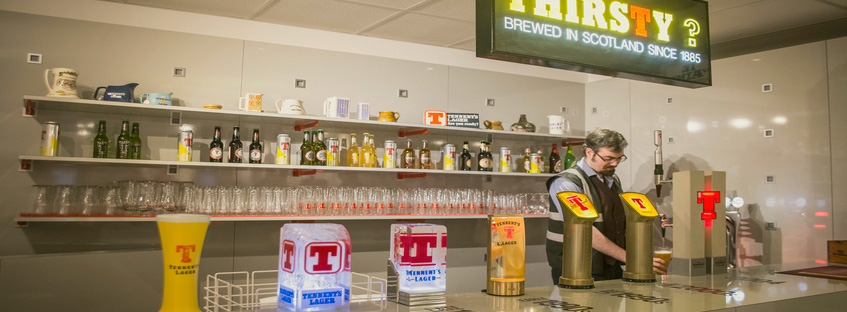
Caledonian 80/-
One of the most famous Scottish Ale, produced in the capital. It owes its name to the “shilling” classification system. Smooth, golden and complex but not extreme flavors. This pint can not miss on our visit.
Caledonian Deuchars IPA
The unmistakable silhouette of this brand’s blue label is present in almost and every one of the pubs. Also produced in Edinburgh, this is one of those Indian Pale Ale beers, designed in Scotland in the 19th century exclusively for transport to colonies. Light in color, slightly carbonated and with a strong flavor, it is among the favorites of the Scots.
Belhaven Best
Thousands of years of beer tradition have manifested themselves in a multitude of elements in traditional culture. One example is Belhaven’s pint. The longest-running brewery. It is an Ale categorized as “best”, best in English, considering it the best creation of this house. Its tap is in almost all bar counters and is ideal to accompany it with a meal in a pub.
Mc Ewan’s Red
From the UK’s largest brewery that has remained independent of the big companies and where the Scottish beer spirit is best preserved. Its two most famous brands are “Red” and “Export”, two Ale with reddish tones and full-bodied amber as well as refreshing.
Brewdog Punk IPA
It is perhaps the most internationally renowned brand in recent years, especially outside the borders with a vast amount of types and varieties. It is best to go straight to their capital brewery on central Cawgate Street 143.
The islands are no exception in the production of fermented juice. The Isle of Skye is considered in itself one of the natural monuments. What started as a joke between several friends and a teacher can now be enjoyed in the form of a golden juice. Visiting the Isle of Skye and drinking this beer is quite an experience that you can enjoy on our three-day tour to Skye and the Highlands.
Black Isle
Organic Inland Highland beer comes from the fertile barley fields of Inverness, with no dyes, preservatives or any other chemicals that can alter the natural qualities of its ingredients. With a large number of varieties of Ales, the Staut with a strong and smoky flavor stands out.
Leann Fraoch
His translation from Gaelic is Heather Ale. For the bravest there is this exclusive beer with a flavor of millennia. When the ancient Celtic peoples populated these lands they began a tradition that has survived to this day in the form of liquid gilding. Using a recipe of Scottish herbs and flowers that includes heather, you get a slightly cloudy blonde beer with a totally different smell and taste than anything we’ve tried so far.
Pubs where to have a Scottish pint
There are many pubs in Edinburgh where you can enjoy fermented juice that it took as a while to make our own recommendation. All members from lochnessbus.com really hope you enjoy our selection.
The Bow Bar
Very central and in one of the most spectacular streets of Edinburgh. Its bar full of jets will make our decision at least hesitant.
The Bow Bar: 80 W Bow, EH1 2HH
The Cafe Royal
One of the best pubs in Edinburgh and also one of the most difficult to find, since only diving among the streets of the New Town. The famous Oister Bar (oyster bar) as it is known among the locals, was also the scene of “Chariots of Fire” (1981). Its peninsula-shaped bar houses a good collection of beer shooters.
The Cafe Royal: 1 W Register St, EH2 2AA
The Guildford Arms
From the previous door we walked 10 meters in the same street to find another indispensable one in all the lists and. With a large assortment of draft beer and thanks to its traditional decoration, the beers taste much much better than in other place.
The Guildford Arms: 19 W Register St, EH2 2AA
Brewdog
It is one of the most recommended beers. To make it easier for us, they have opened two establishments in the capital of Scotland where they can test their particular vision of the vast world of fermented barley juice.
- BrewDog Edinburgh Cowgate: 143 Cowgate, Edinburgh EH1 1JS
- BrewDog Lothian Road: 50 Lothian Rd, Edinburgh EH3 9BY
